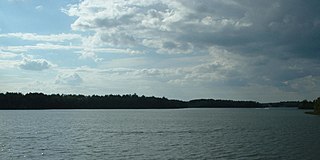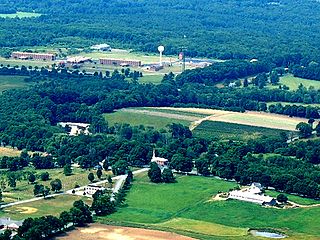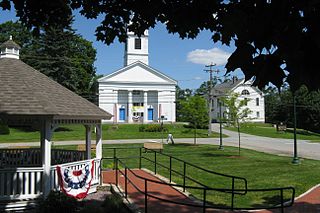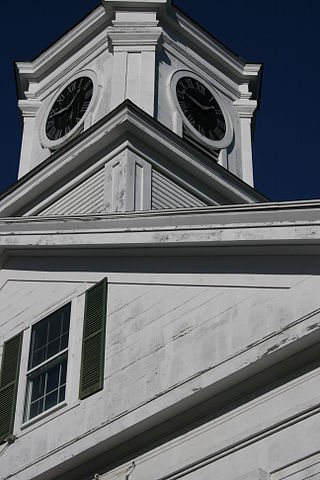
Norfolk County is located in the U.S. state of Massachusetts. At the 2020 census, the population was 725,981. Its county seat is Dedham. The county was named after the English county of the same name. Two towns, Cohasset and Brookline, are exclaves. Norfolk County is included in the Boston-Cambridge-Newton, MA-NH Metropolitan Statistical Area. Norfolk County is the 24th highest-income county in the United States with a median household income of $107,361. It is the wealthiest county in Massachusetts.

Plymouth County is a county in the U.S. state of Massachusetts, south of Boston. As of the 2020 census, the population was 530,819. Its county seats are Plymouth and Brockton. In 1685, the county was created by the Plymouth General Court, the legislature of Plymouth Colony, predating its annexation by the Massachusetts Bay Colony.

Easton is a town in Bristol County, Massachusetts, United States. The population was 25,058 at the 2020 census. It is part of the Greater Boston area.

Stoughton is a town in Norfolk County, Massachusetts, United States. The population was 29,281 at the 2020 census. The town is located approximately 17 miles (27 km) from Boston, 31 miles (50 km) from Providence, Rhode Island, and 35 miles (56 km) from Cape Cod.

Brockton is a city in Plymouth County, Massachusetts, United States; the population was 105,643 at the 2020 United States census. Along with Plymouth, it is one of the two county seats of Plymouth County. It is the sixth-largest city in Massachusetts and is sometimes referred to as the "City of Champions", due to the success of native boxers Rocky Marciano and Marvin Hagler, as well as its successful Brockton High School sports programs. Two villages within it are Montello and Campello, both of which have MBTA Commuter Rail Stations and post offices. Campello is the smallest neighborhood, but also the most populous. Brockton hosts a baseball team, the Brockton Rox. It is the second-windiest city in the United States, with an average wind speed of 14.3 mph (23.0 km/h).

East Bridgewater is a town in Plymouth County, Massachusetts, United States. The population was 14,440 at the 2020 census. It is also a part of Massachusetts' 8th congressional district, of which it is represented by Stephen Lynch.

Halifax is a town in Plymouth County, Massachusetts, United States. The population was 7,749 at the 2020 census.

Rockland is a town in Plymouth County, Massachusetts, United States. The population was 17,803 at the 2020 census. As of December 31, 2009, there were 11,809 registered voters in the community.

West Bridgewater is a town in Plymouth County, Massachusetts, United States. The population was 7,707 at the 2020 census.

Whitman is a town in Plymouth County, Massachusetts, United States. The population was 15,121 at the 2020 census. It is located approximately 20 miles (32 km) south of Boston on the western edge of the South Shore. The chocolate chip cookie was invented in Whitman by Ruth Graves Wakefield at the Toll House Inn.

Hardwick is a town in Worcester County, Massachusetts, United States, about 20 miles (32 km) northwest of the city of Worcester. It had a population of 2,667 at the 2020 census. It includes the villages of Hardwick, Gilbertville, Wheelwright and Old Furnace.

New Braintree is a town in Worcester County, Massachusetts, United States. The population was 996 at the 2020 census.

Oakham is a town in Worcester County, Massachusetts, United States. The population was 1,851 at the 2020 census.

Holbrook is a town in Norfolk County, Massachusetts, United States. As of 2023, the town's population was 12,284.

The Town of Randolph is a suburban city in Norfolk County, Massachusetts, United States. At the 2020 census, the city population was 34,984. Randolph adopted a charter effective January 2010 providing for a council-manager form of government instead of the traditional town meeting. Randolph is one of thirteen Massachusetts municipalities that have applied for, and been granted, city forms of government but wish to retain "The town of" in their official names.

Abington is a town in Plymouth County, Massachusetts, United States, 20 miles (32 km) southeast of Boston. The population was 17,062 at the 2020 census.

Bridgewater is a city in Plymouth County, Massachusetts, United States. As of the 2020 U.S. Census, the town's population was 28,633. The town center of Bridgewater is located approximately 25 miles (40 km) south of Boston, Massachusetts and approximately 35 miles east of Providence, Rhode Island. The town of Bridgewater was formerly a census-designed-place (CDP) until 2010, when Bridgewater was granted city status. Today, Bridgewater is one of 13 municipalities in Massachusetts that have applied for and have been granted a city government while claiming ‘the town of’ in their official names.

Marshfield is a town in Plymouth County, Massachusetts, United States, on Massachusetts's South Shore. The population was 25,825 at the 2020 census.

Barre is a town in Worcester County, Massachusetts, United States. The population was 5,530 at the 2020 census.

North Brookfield is a town in Worcester County, Massachusetts, United States. The population was 4,735 at the 2020 census. The town includes the census-designated place of North Brookfield (CDP).























